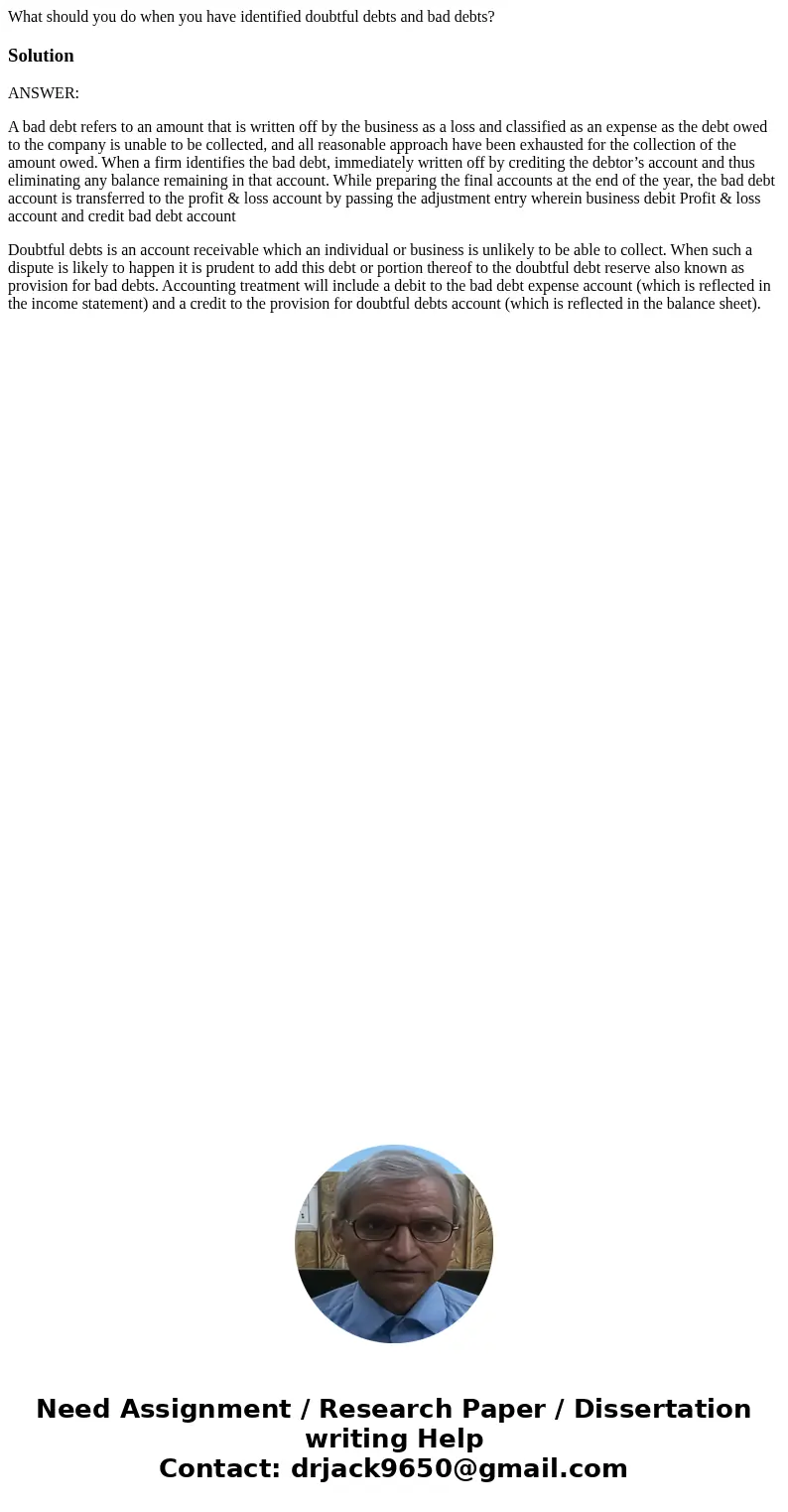What should you do when you have identified doubtful debts a
What should you do when you have identified doubtful debts and bad debts?
Solution
ANSWER:
A bad debt refers to an amount that is written off by the business as a loss and classified as an expense as the debt owed to the company is unable to be collected, and all reasonable approach have been exhausted for the collection of the amount owed. When a firm identifies the bad debt, immediately written off by crediting the debtor’s account and thus eliminating any balance remaining in that account. While preparing the final accounts at the end of the year, the bad debt account is transferred to the profit & loss account by passing the adjustment entry wherein business debit Profit & loss account and credit bad debt account
Doubtful debts is an account receivable which an individual or business is unlikely to be able to collect. When such a dispute is likely to happen it is prudent to add this debt or portion thereof to the doubtful debt reserve also known as provision for bad debts. Accounting treatment will include a debit to the bad debt expense account (which is reflected in the income statement) and a credit to the provision for doubtful debts account (which is reflected in the balance sheet).

 Homework Sourse
Homework Sourse